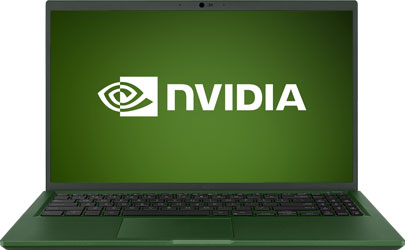Had a little time, so decided to do a little referential power breakdown of the rtx 2050 mobile, and how that would be different in an actual mobile/hybrid device. I'm looking at docked power draw for the switch 2.
So let's break it down:
2048 Cuda cores, 25% more to power that the 1536 in the t239
4 GB gddr6, massive power hog compared to lpddr5 in t239.
Clock 1.245 GHz, 20% faster than my downclock estimate of 1 GHz for the t239.
There are other factors I am not accounting for as I have not found isolated/normalized power draws for them, like the aux power draw shown in the power breakdown article, i dont know how that applies to the lenovo laptop, so im leaving whatever watts they may be in, same for pcb loss, and the fact the 2050 has to power 2 GPC's and the IO crossbar between them, is more additional watt expenditure over the t239, but that won't be included. So whatever we end up with, is going to be higher than if I had all the data broken down.
So let's get rid of the ram first:
Starting point, 30 watts:
Gddr6x was measured to have a power draw of 2.5 watts per GB here:
Well, meanwhile there are several leaks of “pre-release” models of the upcoming GeForce RTX 3080, but I don’t really trust the roast published here, because I just assume design validation samples.

www.igorslab.de
However, the 2050 mobile does not appear to use gddr6x, but gddr6, gddr6x was shown by micron to have a 15% power efficiency over gddr6 here:
Micron discusses graphics memory: GDDR6X is here, PAM4 & PAM8 for HBM patented

www.tomshardware.com
So 15% more than 2.5 is 2.875, 2.875 X 4Gb =11.5 watts drawn for the 4 Gb gddr6 ram.
Lpddr4, which was used in the switch, has been measured to have a power draw around 2 watts for a complete 2x 32 bit bus x3 gb capacity =6Gb unit for the familiar 25 GB/s bandwidth (switch had 2 32 bit x2 gb units for the same bus and bandwidth.) From the university of maryland Here:
Lpddr5 has been stated by samsung to be 30% more efficient than lpddr4x shown here:
which was stated to be 20% more power efficient over lpddr4 here:
So 70% of 2 watts = 1.4 watts, and 80% of that = 1.12 watts for a 2 unit lpddr5 block.
Gddr6 11.5 watts, - lpddr5 1.12 watts = 10.38 watts dropped just by switching to low power ram from gddr.
Now we are at 30 watts -10.38 watts, 19.62 watts.
Now let's get rid of the fan difference. The lenovo rtx 2050 being used in this example uses a 5 watt fan, sourced by searching replacement parts for it.
The switch uses a 3 watt fan, which shouldnt really need to change.
so 2 more watts down for 17.62 watts
Now we're down to the gpc/sm's cause I'm just leaving the watts from stuff I couldn't find for certain in.
So the 2050 mobile has 2058 ampere cuda cores, or 16 sm's, 25% more to power than t239.
17.62 × .75 = 13.215 watts.
And peak performance/power draw is calculated using its boost clock of 1.245, which is 20% more than 1 ghz so.
13.215 * .80 = 10.572 watts.
And that's of course, assuming T239 is still on samsung 8nm, which doesn't have to be the case.





